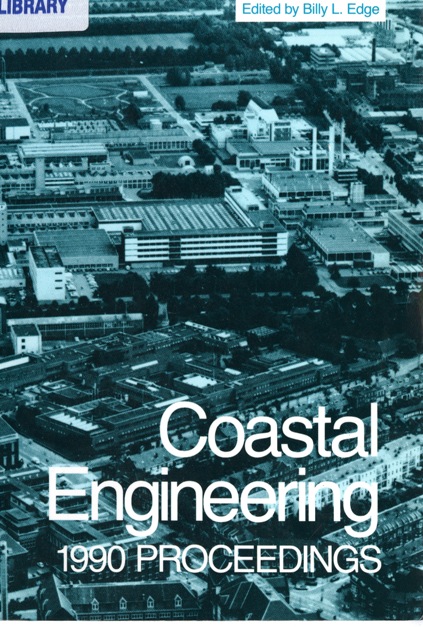Abstract
This paper presents a summary of carefully conducted laboratory experiments on the attenuation of simulated spectral waves propagating over an 18-m-long bottom section covered by 10-cm-thick layers of 0.12- and 0.2-mm-diameter uniform quartz sands. The measured attenuation is used in conjunction with the theory for spectral wave attenuation developed by Madsen et al. (1988) to determine values of the movable bed friction factor for spectral waves. When the values of movable bed friction factors, fwr, are plotted against a fluidsediment interaction parameter, the ratio of skin friction Shields parameter for an equivalent monochromatic wave, ij>m' , and the critical value of Shields parameter for initiation of sediment motion, tj)c, a well-defined relationship between fwr and i>mx'li>c emerges. This relationship is independent of spectral shape (both finite-depth Jonswap and Neumann spectra were simulated) and is the same for the two sediment types tested. Although limited by the range of experimental conditions achieved in the laboratory study the results suggest a simple methodology for the evaluation of spectral wave attenuation from knowledge of sediment and wave characteristics.
Authors retain copyright and grant the Proceedings right of first publication with the work simultaneously licensed under a Creative Commons Attribution License that allows others to share the work with an acknowledgement of the work's authorship and initial publication in this Proceedings.

